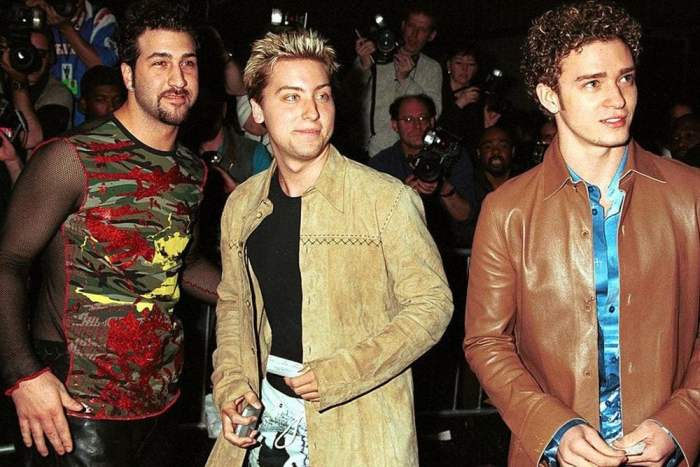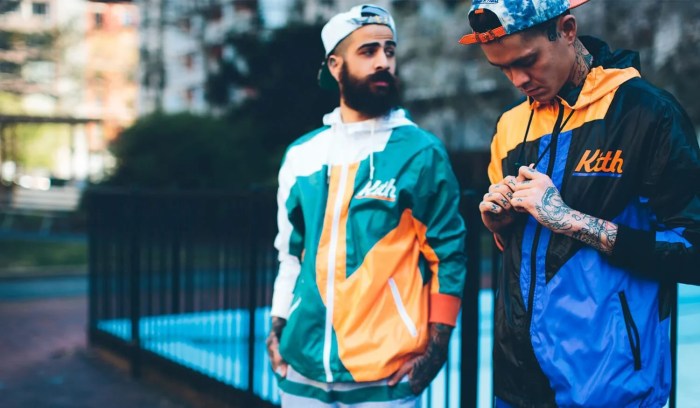1959 Mens Fashion A Style Retrospective
1959 Men’s Fashion Silhouettes
1959 men’s fashion – The year 1959 presented a fascinating blend of styles in men’s fashion, reflecting a post-war era of prosperity and evolving cultural influences. Silhouettes were generally more structured and tailored than the looser fits of the previous decade, yet foreshadowed the more relaxed styles of the 1960s. This section will explore the defining characteristics of these silhouettes, comparing them to the trends of both preceding and succeeding decades.
Dominant Men’s Fashion Silhouettes of 1959
Two main silhouettes dominated 1959 men’s fashion: the “Ivy League” look and the more broadly shouldered, athletic silhouette. The Ivy League style, inspired by the preppy aesthetic of prestigious East Coast universities, emphasized a slim, tailored fit with a focus on clean lines and refined details. In contrast, the athletic silhouette, often seen in sportswear and casual wear, featured broader shoulders and a more relaxed fit, reflecting a growing interest in fitness and outdoor activities.
Comparison with Preceding and Succeeding Decades
Compared to the looser, more casual styles of the 1940s and early 1950s (influenced by wartime rationing and practicality), 1959’s silhouettes were noticeably more fitted and structured. The emphasis on tailored suits and crisp lines represented a move towards a more sophisticated and refined aesthetic. Looking ahead, the athletic silhouette hinted at the more relaxed and casual styles that would become prevalent in the 1960s, as the sharp lines of the 1950s gradually gave way to a more diverse range of silhouettes.
Examples of 1959 Men’s Fashion Silhouettes
| Silhouette Name | Defining Characteristics | Popular Garments | Influential Designers |
|---|---|---|---|
| Ivy League | Slim fit, tailored, clean lines, button-down shirts | Suits, button-down shirts, chinos, loafers | Brooks Brothers (style influence, not necessarily a single designer) |
| Athletic | Broad shoulders, relaxed fit, emphasis on comfort and movement | Sports jackets, casual trousers, sweaters, polo shirts | Various sportswear brands emerging in popularity |
Key Fabrics and Textures of 1959 Men’s Apparel
The fabrics used in men’s clothing during 1959 reflected both traditional choices and the burgeoning impact of new synthetic materials. Natural fibers like wool, cotton, and linen remained staples, while synthetics like rayon and nylon began to gain popularity, offering new possibilities in terms of texture, durability, and care.
Fabric Types, Uses, and Textures
- Wool: Used extensively in suits, overcoats, and sport jackets; textures ranged from smooth worsteds to textured tweeds and flannels.
- Cotton: Popular in shirts, trousers, and casual wear; textures included poplin, broadcloth, and denim.
- Linen: Often used in summer suits and shirts; known for its crisp, breathable texture.
- Rayon: A synthetic fiber offering a silk-like drape; used in linings, shirts, and ties.
- Nylon: A durable synthetic fiber used in outerwear and hosiery.
Impact of Fabric Technology Advancements
The increasing availability of synthetic fibers like rayon and nylon significantly impacted men’s fashion. These fabrics offered advantages in terms of wrinkle resistance, durability, and ease of care, making them attractive alternatives to traditional natural fibers. This led to a wider variety of clothing options and greater affordability for consumers.
Colors and Patterns in 1959 Men’s Fashion
The color palettes and patterns of 1959 men’s fashion reflected a blend of conservative and more adventurous choices. While muted tones remained popular, bolder colors and patterns began to emerge, reflecting a shift towards a more expressive style.
Prevailing Color Palettes and Patterns

Source: thefashionisto.com
Neutral tones such as navy, gray, and brown were still prevalent, particularly in suits and outerwear. However, bolder colors like burgundy, olive green, and muted shades of blue also gained popularity. Popular patterns included subtle checks, stripes, and plaids in suits and shirts, while more playful patterns might be seen in casual wear such as shirts and ties.
Cultural Influences on Color and Pattern Choices
The continued influence of traditional menswear styles contributed to the popularity of muted tones and classic patterns. However, the growing popularity of leisure activities and a more relaxed social atmosphere contributed to the emergence of bolder colors and more playful patterns in casual wear. Hollywood also played a significant role, with actors influencing the adoption of certain colors and styles among the public.
A Typical 1959 Men’s Color Palette and Pattern Combination
Imagine a color palette featuring navy blue, charcoal gray, and a muted olive green. A typical suit might be navy blue with a subtle gray check, paired with a light blue or white cotton shirt and a subtly patterned tie in shades of gray and olive green. A more casual outfit might incorporate a burgundy sweater, olive green chinos, and a white cotton shirt.
Iconic 1959 Men’s Garments and Accessories
1959 men’s fashion featured a range of iconic garments and accessories that continue to influence modern styles. This section details some of the key pieces and their defining characteristics.
Iconic Garments and Their Features

Source: apetogentleman.com
| Garment Type | Description | Notable Features |
|---|---|---|
| Suit | Typically made from wool, often in a conservative color like navy or gray. | Structured silhouette, notched lapels, single or double-breasted closure. |
| Sport Jacket | More casual than a suit jacket, often made from tweed or corduroy. | Patch pockets, relaxed fit, often paired with casual trousers. |
| Trousers | Could range from tailored dress trousers to more casual chinos. | Pleated or flat-front styles, typically high-waisted. |
| Shirt | Button-down shirts were particularly popular, often in solid colors or subtle patterns. | Straight or slightly fitted cut, often made from cotton or linen. |
| Tie | A wide variety of ties were worn, reflecting personal style and occasion. | Various widths, patterns, and fabrics. |
Popular Accessories
Accessories played a vital role in completing a 1959 men’s outfit. Fedora hats, leather belts, wingtip shoes, and simple cufflinks were common choices.
Influence of Hollywood and Pop Culture on 1959 Men’s Style
Hollywood actors and popular culture exerted a considerable influence on men’s fashion trends in 1959. The on-screen styles of leading men often became aspirational for a wider audience, shaping perceptions of what was considered stylish and fashionable.
Hollywood’s Impact on Men’s Fashion
Stars like Paul Newman and Marlon Brando, with their effortlessly cool styles, influenced casual menswear trends. Their preference for more relaxed fits and simple, well-made garments contributed to the growing popularity of casual wear and sportswear. In contrast, more formal styles, as seen on other actors, maintained their relevance in more traditional settings.
Cultural Figures and Subcultural Styles, 1959 men’s fashion
While Hollywood provided broad trends, specific subcultures also shaped styles. College students embraced the Ivy League look, while working-class men might favor more practical and durable clothing. These diverse styles reflected the evolving social landscape and the increasing diversity in men’s fashion choices.
Popular Music and Cultural Trends

Source: apetogentleman.com
The burgeoning rock and roll scene had a subtle but growing impact on men’s fashion. While not yet a dominant force, the music genre’s rebellious spirit began to influence younger men’s choices towards less formal and more expressive styles. This foreshadowed the more significant changes that would come in the following decade.
Evolution of 1959 Men’s Fashion into Subsequent Styles
The transition from the styles of 1959 to those of the early 1960s was gradual, with certain elements persisting while others evolved significantly. This section Artikels the key continuities and changes.
Key Elements That Persisted and Evolved
- Tailored Suits: While still present, suits became slightly less structured and more relaxed in fit.
- Casual Wear: The popularity of casual wear continued to grow, with a greater emphasis on comfort and individual expression.
- Color Palettes: While muted tones remained popular, bolder colors became more accepted.
- Influence of Hollywood: Hollywood continued to be a major influence, but the styles became more diverse, reflecting the changing cultural landscape.
Comparison of 1959 and Early 1960s Styles
The key difference lies in the increasing acceptance of casual wear and a more relaxed approach to dressing. The sharp, highly structured silhouettes of 1959 gave way to a wider variety of fits and styles, paving the way for the more diverse and expressive fashions of the 1960s.
Quick FAQs
What were some common hairstyles for men in 1959?
Slicked-back hair, side parts, and the pompadour were popular hairstyles for men in 1959.
Were there any significant fashion differences between social classes in 1959?
Yes, while tailored suits were prevalent across social strata, higher social classes often favored more expensive fabrics and bespoke tailoring, while working-class men might opt for more durable, ready-to-wear options.
How did the rise of television influence 1959 men’s fashion?
Television significantly broadened the exposure of fashion trends, showcasing styles worn by actors and other public figures, influencing wider adoption across various social groups.





















